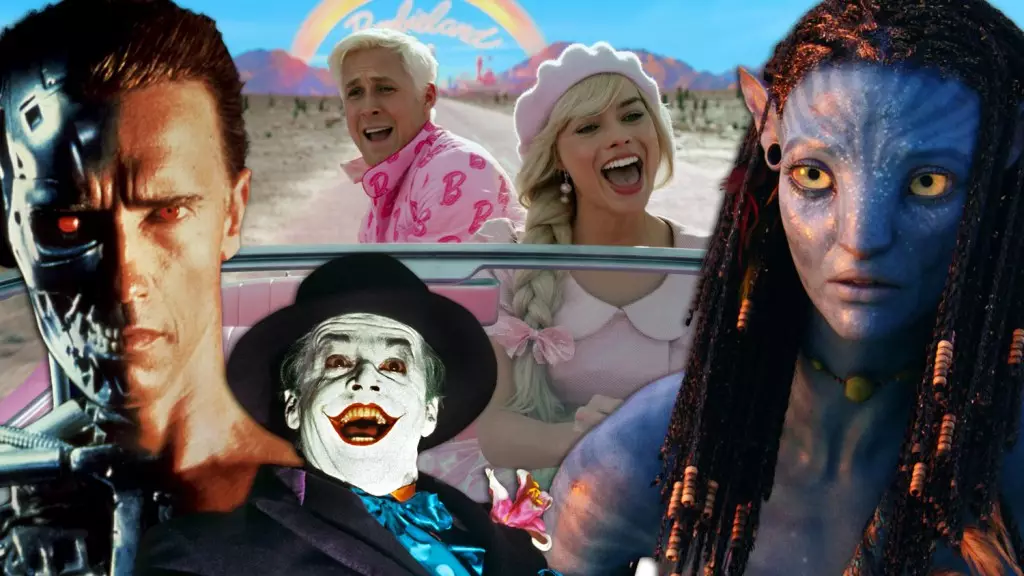Box office performance is often considered a litmus test of a film’s popularity and cultural impact. The North American cinema landscape has seen remarkable transformations since 1977, the year that marked the debut of the original *Star Wars*. This blockbuster film not only revolutionized special effects and marketing strategies but also heralded the age of franchise filmmaking that dominates today’s cinema. As we delve into the highest-grossing films over the decades, we’ll see recurring themes, rising trends, and the forces shaping viewer preferences in the ever-evolving film industry.
The most notable trend in the box office charts is the significant dominance of established franchises, especially superhero films. With titles like *Avengers: Endgame*, *Black Panther*, and the latest iterations of beloved series, more and more viewers are gravitating towards familiar characters and universes. For instance, *Avengers: Endgame*, released in 2019, grossed over $858 million in North America alone, reinforcing the Marvel Cinematic Universe’s preeminence in contemporary cinema.
This success can largely be attributed to a strategic design of interconnected narratives and an overall sense of community that these franchises foster among fans. They invite audiences to not just watch individual films, but to invest emotionally in a broader storyline, creating a culture of anticipation and engagement that drives people to theaters.
In addition to superhero movies, animated films have carved a substantial niche at the box office. Disney and Pixar have consistently produced enchanting narratives that appeal to both children and adults alike. Titles like *Inside Out 2*, slated for release in 2024, have generated significant pre-release excitement, evident in its impressive North American box office total of $652 million thus far.
Animation has evolved significantly, not only in terms of technology but also in storytelling depth. Films like *Zootopia* and *Coco* weave intricate themes that resonate with all ages, reinforcing the notion that animated films no longer cater solely to young audiences. This crossover appeal ensures a robust and loyal fanbase, often translating into impressive box office numbers.
No discussion of box office behemoths would be complete without recognizing the enduring legacy of the *Star Wars* franchise. The franchise brought with it a new era of myth-making and world-building that has captivated audiences for generations. Even the newer entries, such as *Star Wars: The Force Awakens*, have achieved significant box office success, grossing vast sums and reminding audiences of the franchise’s longstanding cultural relevance.
While some might argue that the franchise’s overexposure has led to a fatigue among moviegoers, the numbers tell a different story. As of the latest reports, Star Wars films remain among the top-grossing films of all time, firmly establishing their place in cinematic history. The blend of nostalgia and innovation keeps fans returning to theaters, creating an ongoing dialogue between old and new.
Interestingly, while franchises dominate the charts, there is also room for original storytelling. Films like *Get Out* and *Soul* have challenged conventional norms and have found success without the backing of an expansive franchise. Their ability to connect with audiences on a personal level showcases the power of unique narratives amidst a landscape saturated with sequels and reboots.
Moreover, as we witness changes in distribution methods—especially with the emergence of streaming services—there’s an ongoing debate about what constitutes a box office hit. Enhanced accessibility has led to a rise in diverse cinema that, traditionally, might not have found its way to mainstream audiences. Such evolving dynamics indicate a shifting paradigm in box office relevance.
As we look to the future, the landscape of box office hits will undoubtedly continue to shift. While superhero films, animated adventures, and classic franchises will likely remain staples, it’s essential to foster a space for originality and diverse storytelling. Ultimately, the interplay between nostalgia and innovation, alongside changing viewing habits, will shape not only what dominates the box office but also the very essence of cinematic art for years to come. As we reflect on the journey thus far, there is much to anticipate—both in terms of viewing experiences and evolving cultural narratives.
